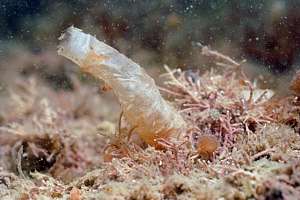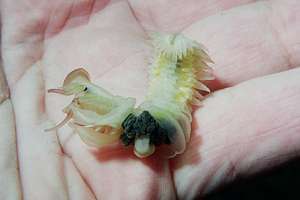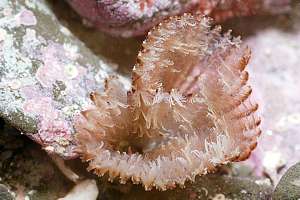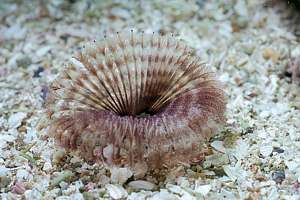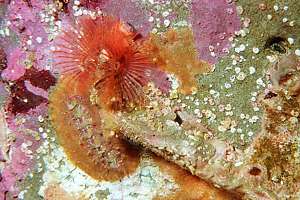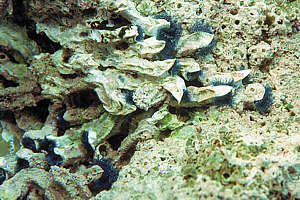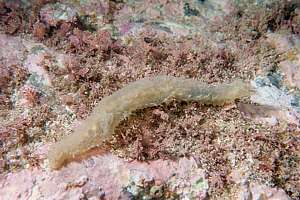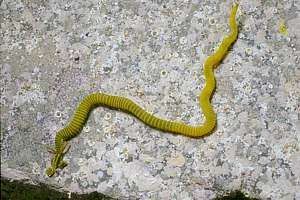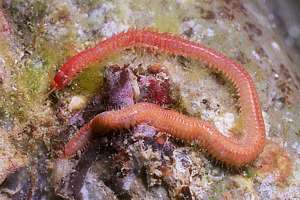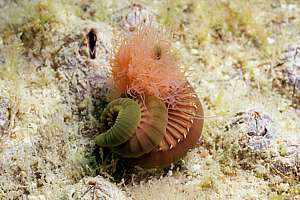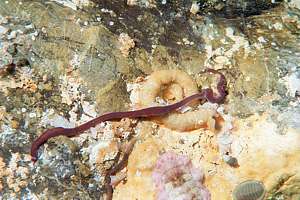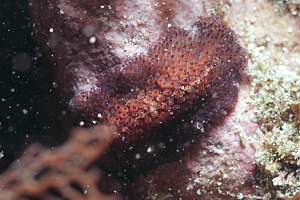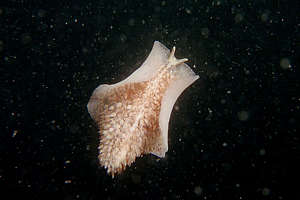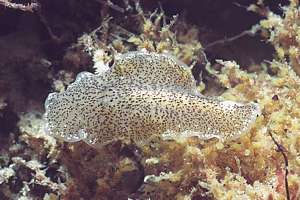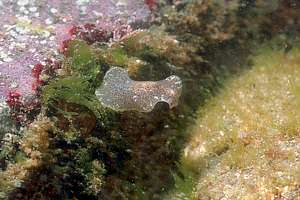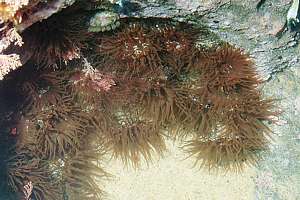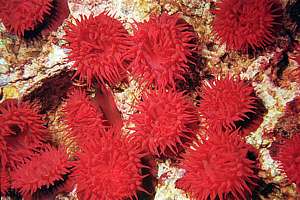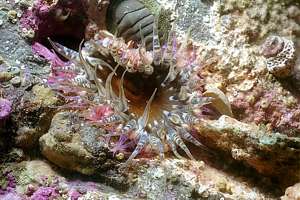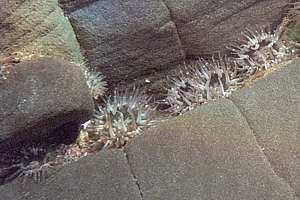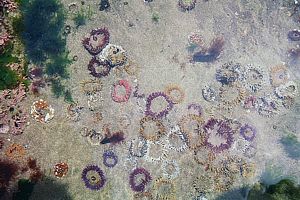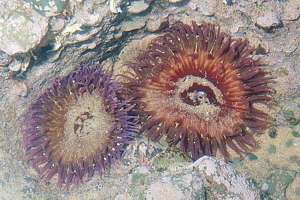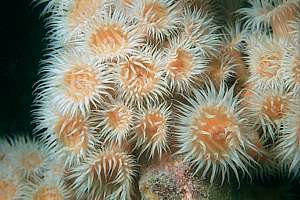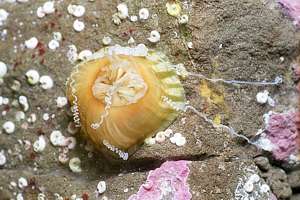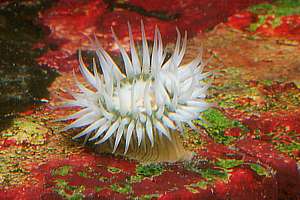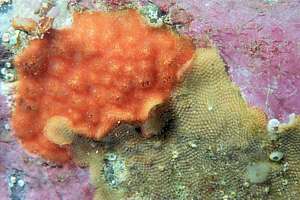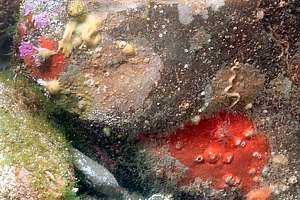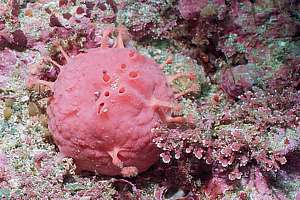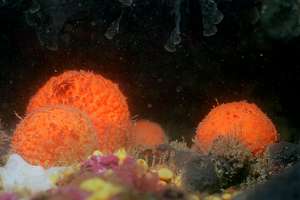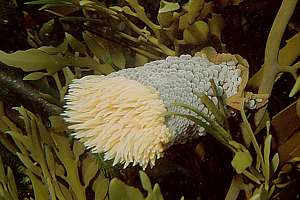
f027219: Phlyctenactis tuberculosa, [kotore moana]
the large wandering anemone has corn-like tubercles on its extensible column.
It feels very soft to the touch and its column won't sting. It is found
in calm waters where it wanders from seaweed to seaweed. It mainly comes
out at night to catch nocturnal zooplankton, or it reaches down to sweep
the sea bottom. Its column is highly variable in colour: pink, mauve, grey,
green, brown, orange. |
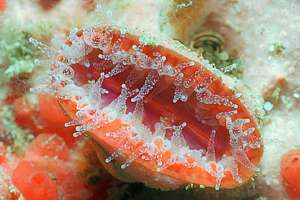 f049433: fan coral (Flabellum rubrum) [pungatea] forms
a hard limestone cup with ribs inside, into which the animal can withdraw.
By night it extends its tentacles to catch zooplankton. Its colours are
orange, red and pink. It is a NZ native animal.
f049433: fan coral (Flabellum rubrum) [pungatea] forms
a hard limestone cup with ribs inside, into which the animal can withdraw.
By night it extends its tentacles to catch zooplankton. Its colours are
orange, red and pink. It is a NZ native animal. |
